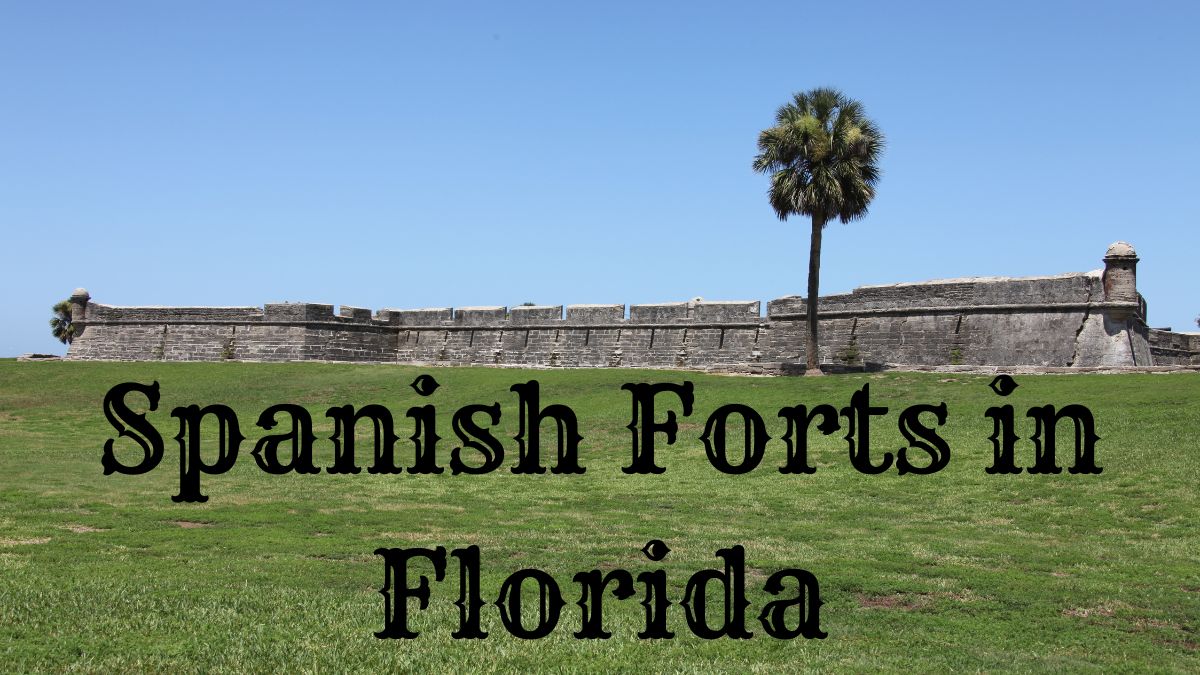Embark on a journey through time as we explore the pivotal role of Spanish forts in Florida’s tapestry of history.
These bastions, standing since the 16th century, were the bulwarks of Spain’s New World empire and focal points in the European struggle for North American dominance.
The venerable Castillo de San Marcos in St. Augustine, the oldest masonry fort in the U.S., is a testament to Spain’s initial foothold.
As we traverse epochs—from British rule to the Seminole Wars—these forts emerge as linchpins in military strategy and sovereignty shifts.
Discover the intricate architecture withstood sieges and the preservation efforts that keep their stories alive.
From the iconic Castillo de San Marcos to the lesser-known Fort Jefferson, uncover the indelible marks these structures left on Florida’s evolution, shaping its military, economic, and cultural landscape.
Join us to uncover the enduring legacy of Spanish colonial might and its profound influence on the Sunshine State’s past and present.
Historical Overview of Spanish Forts in Florida
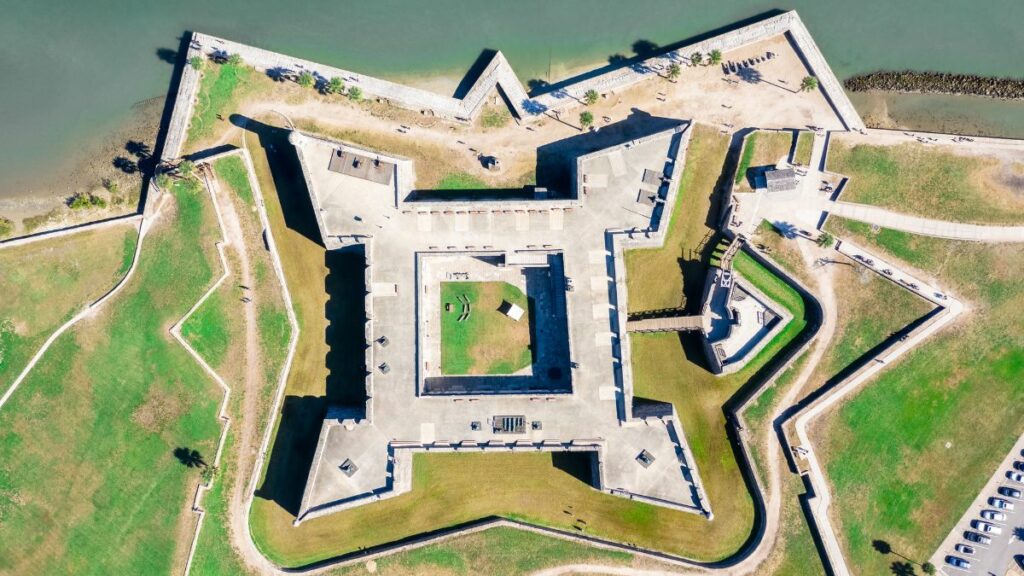
Spanish forts in Florida mark pivotal locations in the saga of European colonization in North America.
Cast as bulwarks to protect Spanish interests against other European powers, these forts played strategic roles from the 16th century onward.
St. Augustine’s Castillo de San Marcos is notable as the oldest masonry fort in the continental United States, evidence of Spain’s early hold in the New World.
By the Treaty of Paris in 1763, British forces held Florida, but it was a brief tenure. Spanish troops reclaimed their forts after the American Revolution.
During the Seminole Wars, these fortifications became staging grounds for military operations teeming with Spanish and, later, American military presence.
- Civil War era: The forts’ usefulness persisted as Confederate troops occupied them and later by Union forces. Florida’s historical forts record the shifts in power through these tumultuous periods.
- Post-Civil War: Although the military significance of these forts waned, their historical importance has been preserved. Sites like the Castillo de San Marcos were designated as National Monuments, ensuring the preservation of their structures.
Key forts include:
- Castillo de San Marcos: Standing since the late 1600s.
- Fort Matanzas: Built to guard St. Augustine’s southern approach.
- Fort San Carlos de Barrancas: A defense for Pensacola Bay.
These fortifications are tangible remnants of Spain’s once-mighty presence in the southeastern region of the United States.
Their walls provide a narrative of colonial struggles, changing sovereignties, and the unfolding history of America.
Notable Spanish Forts and Their Roles
Spanish forts in Florida served crucial defensive and strategic roles throughout the history of Spanish colonial endeavors in North America, and they continue to be sites of rich historical legacy.
The forts often protected strategic interests served as trade hubs and safeguarded Spanish territories against various threats.
Castillo De San Marcos National Monument
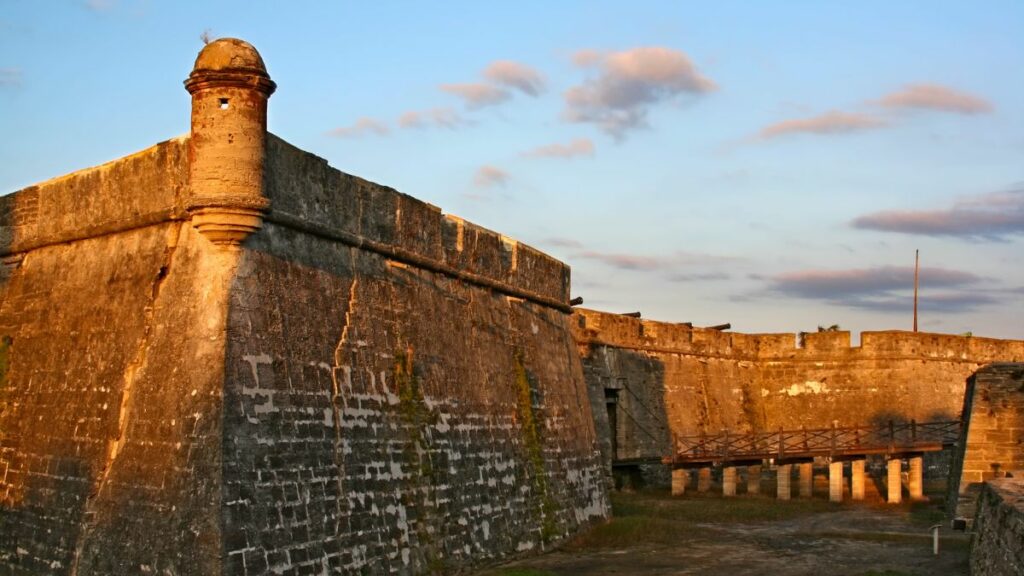
Named initially Fort Marion, the Castillo de San Marcos is a significant historical landmark in St. Augustine, Florida. Built between 1672 and 1695 using coquina stone, this fortress is the oldest masonry fort in the continental United States.
The Spanish constructed it to protect against invasions and pirate raids, and it played a crucial role in safeguarding Spanish Florida.
The fort’s design includes a bastion system, enabling defenders to cover all angles of approach.
Despite changing hands through various European conflicts and serving different military purposes over time, including stints as a prison, the Castillo was never captured in battle.
Renamed Fort Marion when Florida became part of the United States in 1821, it was restored to its original name in 1942 to honor its Spanish origins.
Decommissioned in the late 19th century, it was designated a National Monument in 1924. Now managed by the National Park Service, the Castillo de San Marcos is open to the public for educational tours, reenactments, and exhibits, offering a glimpse into the colonial military history of the United States.
Fort Matanzas National Monument
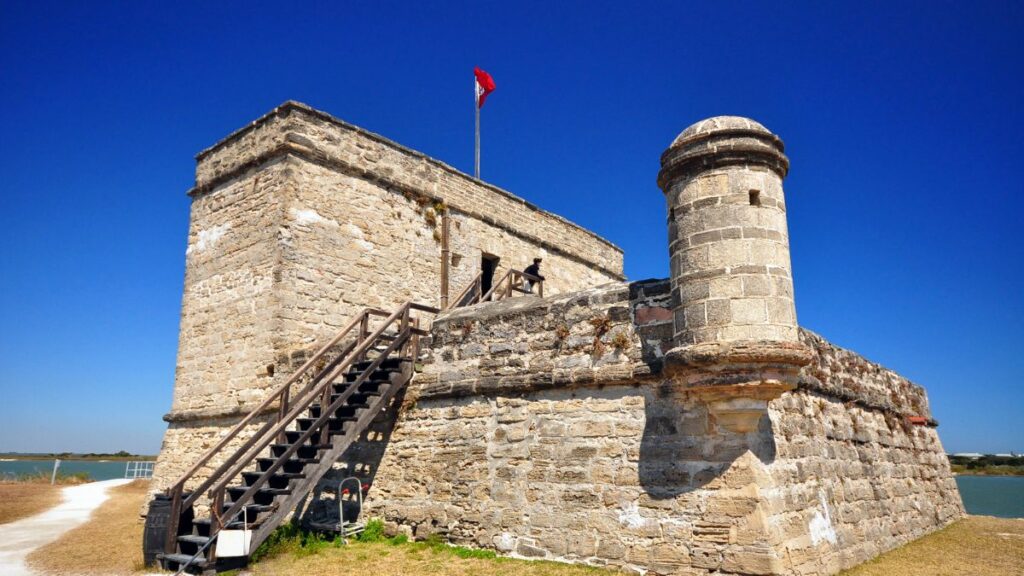
Fort Matanzas National Monument, situated by the Matanzas Inlet near St. Augustine, was established as a vital defensive structure.
Built by the Spanish in 1742, the fort was designed to secure St. Augustine’s southern access point against British military expeditions threatening Spanish control in Florida.
This small fortification was part of a more extensive defensive network, working with the more formidable Castillo de San Marcos to provide a layered defense.
Fort Matanzas was strategically important because it guarded the Matanzas River, which was a potential backdoor for enemy forces attempting to bypass the primary defenses at the Castillo and attack St. Augustine from the less protected southern flank.
The fort is relatively modest, especially compared to its larger counterpart, the Castillo de San Marcos. However, its presence was a clear statement of the Spanish resolve to defend their territory.
Today, Fort Matanzas is preserved as a National Monument, offering visitors a historical perspective on 18th-century military strategies and the lengths to which colonial powers went to protect their interests in the New World.
Fort Mose Historic State Park
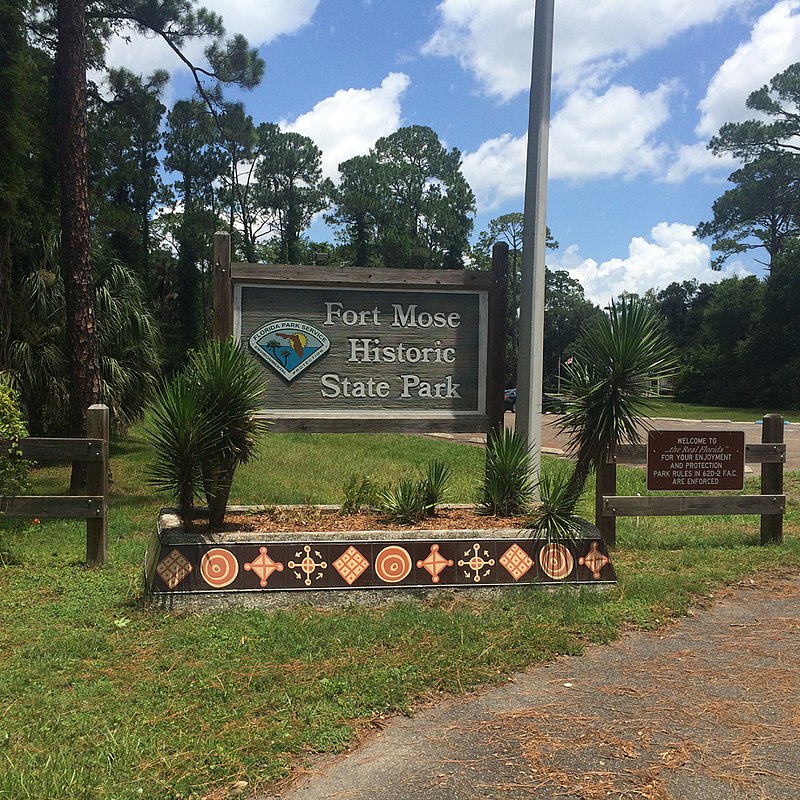
Fort Mose, pronounced “Moh-say,” holds a unique place in American history as the first legally sanctioned free African settlement in what is now the United States.
Situated just north of St. Augustine, it was established in 1738 by the Spanish as a place of refuge for enslaved people who escaped from the British colonies.
The settlement provided sanctuary to those seeking freedom and became an integral part of the Spanish defensive strategy in Florida.
In exchange for their freedom, the inhabitants of Fort Mose were required to defend the Spanish territory against British incursions.
As such, the fort and its community played a recurring role in the military operations against the British, serving as a frontline defense for St. Augustine.
Fort Mose’s historical significance extends beyond its military contributions; it is a landmark of African American heritage and the struggle for liberty and self-determination.
Today, Fort Mose is recognized as a site of national importance and is preserved to educate the public about this early chapter of African American history and Spanish colonial efforts in North America.
Fort Clinch State Park

Fort Clinch, located on Amelia Island, is a 19th-century military structure that belongs to the Third System of coastal fortifications in the United States.
Although its construction began after Florida became a U.S. territory, the need for such fortifications dates back to earlier Spanish concerns over coastal defense.
The fort was strategically important for its commanding position over the entrance to the Cumberland Sound, an essential access point for naval and shipping activities.
Despite its formidable design and strategic location, Fort Clinch never engaged in significant combat. It was a silent sentinel, ensuring control over this crucial maritime corridor.
Today, Fort Clinch is a well-preserved historical site, offering insights into the era’s military planning and construction techniques.
Fort Jefferson and Dry Tortugas National Park
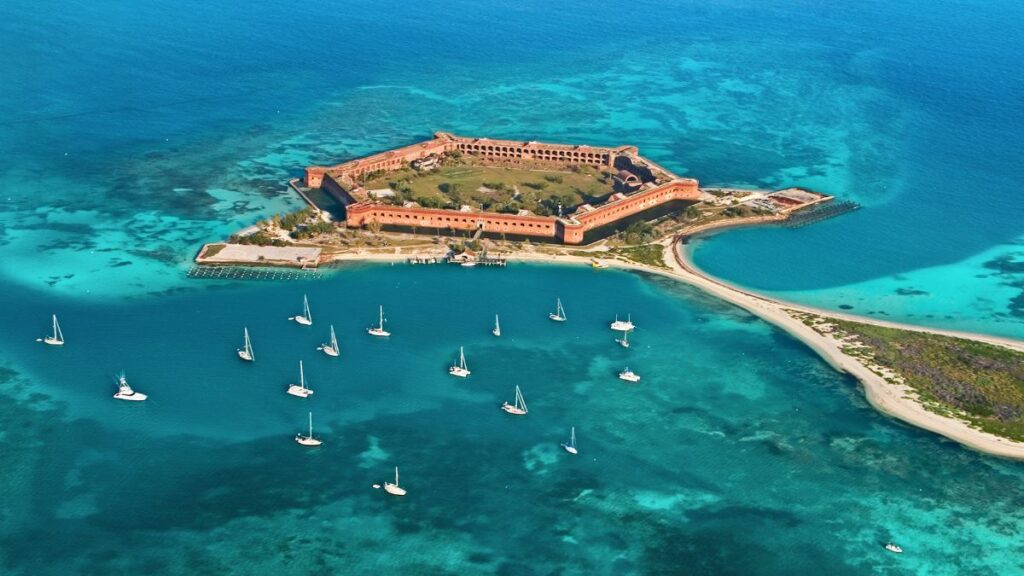
Fort Jefferson is a massive coastal fortress situated on Garden Key in the Dry Tortugas, about 70 miles west of Key West. Construction of this imposing structure began in 1846, following Florida’s incorporation into the United States.
While the fort was built well after the Spanish period, it is included in discussions of the region’s history due to its geographic location in an area heavily influenced by Spain in earlier centuries.
It also represents the enduring strategic military mindset during Spanish rule.
Designed to secure U.S. shipping routes and strengthen the nation’s southern maritime defenses, Fort Jefferson serves as a historical reminder of America’s efforts to protect its expanding naval interests.
Despite never being fully completed or seeing significant battle, the fort remains iconic, symbolizing 19th-century American military engineering and strategic foresight.
Architecture and Design of Spanish Fortifications
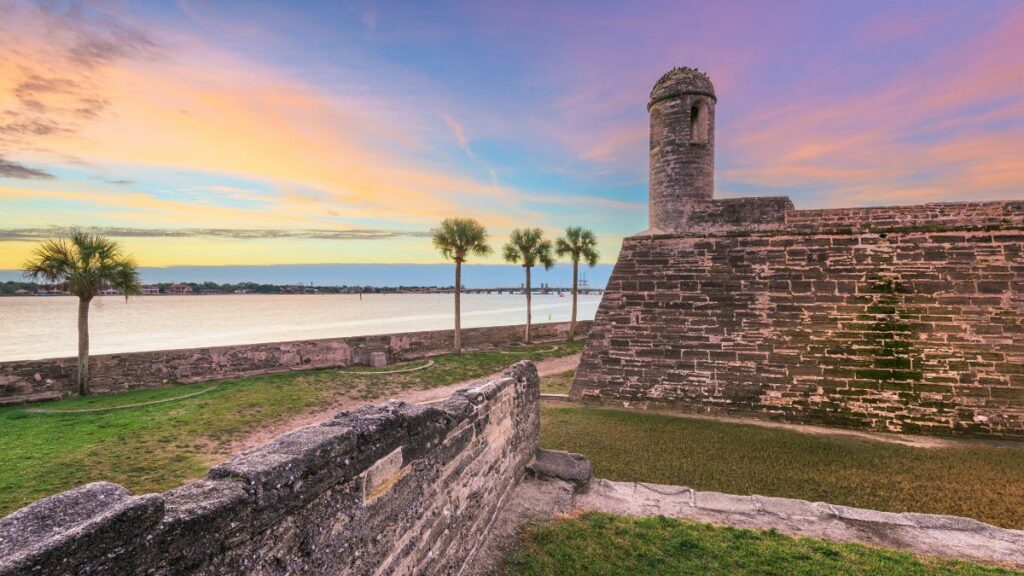
Spanish forts in Florida exhibit a blend of ingenious design and architectural endurance. Early wooden forts served as precursors to more enduring structures.
They were quickly recognized for their susceptibility to fire and decay, prompting a switch to masonry constructions.
Castillo de San Marcos is the oldest masonry fort in the continental United States. Its design departs from traditional square fortresses. Instead, it adopts a star shape optimized for defense.
The Star Fort design, pioneered during the Renaissance, allowed defenders to cover adjacent walls with defensive fire.
The walls of Castillo de San Marcos, like those of other forts of its era, are composed of coquina, a sedimentary rock made from compressed shells, demonstrating remarkable durability.
These straight fort walls intersect at bastions, providing wide fields of fire.
Curtain walls, a term used for the outer walls connecting bastions, in these forts were typically tall and complemented by a dry moat. The emphasis was on repelling invaders with minimal force.
The construction transitioned from wooden structures to coquina after recognizing wood’s vulnerability to assaults and natural elements.
The walls of their wooden structures were initially practical for immediate defense but were not sustainable.
Spanish fortifications in Florida have thus survived centuries, bearing witness to the strategic military thinking of their era, along with the adoption of available resources and constructive techniques that marked Spanish imperial architecture overseas.
Spanish Forts as Sites of Conflict & Cooperation

Spanish forts in Florida served as significant hubs in historical conflicts and alliances.
Constructed by the Spanish Crown, these structures were focal points during various wars, reflecting the tumultuous history of control over Florida.
The Seminole Wars, including the Second Seminole War, saw these forts as battlegrounds where Spanish troops, Native Americans, and runaway slaves found themselves in a complex web of conflict and cooperation.
Defensive strategies and alliances formed around these forts, reflecting a period marked by resistance against American expansion.
During the American Revolution, the forts were strategic sites. The British targeted Spanish Florida, though Spain was not officially aligned with the American colonies.
British attacks on these forts underscored the broader geopolitical strife during the era.
Throughout the Civil War, these forts were commandeered by Confederate troops and later by Union forces.
The transition of control over these structures exemplified the shift in power during the war and symbolized the larger struggle for territory and ideology.
The Spanish-American War further altered the role of Spanish forts in Florida. Their legacy of military engagement was reinvigorated as the United States and Spain vied for influence in the region.
This period shaped the forts’ identities as symbols of conflict and cooperation as priorities shifted from colonial defense to asserting national interests.
Short and well-fortified, the forts are enduring remnants of the periods they witnessed: the exchange of power, the defense against invaders, and the formation of alliances that shaped Florida’s history.
Preservation and Public Engagement
Preserving Spanish forts in Florida is integral to maintaining the historical narrative, while public engagement initiatives enhance these historic sites’ educational and cultural value.
Education and Visitor Experience
National Park Service and state park agencies provide extensive educational resources and programming to enhance the visitor experience at Florida’s Spanish forts.
Visitors can access information through visitor centers and enjoy amenities like picnic areas. Interactive experiences include on-site field trips and virtual tours, which offer an immersive view of the historical significance of these sites.
- Field Trips: Organized for schools and educational groups.
- Virtual Tours: Available on agency websites for remote visitors.
Archaeological Discoveries and Research
Recent archaeological findings, facilitated by methods like ground-penetrating radar, have been pivotal in understanding the Spanish colonial period in Florida.
Noted researchers such as the curator emeritus of South Florida archaeology and experts from the University of Florida and the Florida Museum of Natural History, including figures like William Marquardt, have conducted significant research at these sites.
Discoveries continue to inform preservation strategies and public knowledge of the forts’ historical contexts.
- Ground-Penetrating Radar: Used to locate subsurface anomalies indicative of archaeological sites.
- Research Publications: Regularly contributed by academic experts, enhancing public and scholarly understanding.
Contextual Impact of Forts on Florida’s Development
Florida’s strategic location along the Atlantic coast and the Gulf of Mexico made it an important military and naval frontier. The construction of forts such as Fort Barrancas, Fort Pickens, and Fort Zachary Taylor, as well as a navy yard, served as a foundation for defense and colonial ambition in the region.
- Military Presence: These forts contributed significantly to a military presence that deterred external threats and facilitated regional control.
- Economic Impact: The forts and associated navy yard triggered economic activities, supporting a growing population and aiding in the development of southern plantations.
Due to the increase in trade and the economic support the forts provided, they influenced the surrounding areas, turning Florida into a prominent player in the economy of the southern United States.
- Influence on Settlements: The security provided by these structures encouraged settlement in Florida, contributing to its eventual admission as part of the United States.
- Military Prisons: Some of these forts also functioned as military prisons during various conflicts, adding a layer to Florida’s historical narrative.
These forts’ historical, strategic, and economic roles have played an integral part in shaping Florida’s trajectory from a fledgling settlement to a vital component of the United States.

Cory is a website owner and content creator who enjoys fishing, history, coin collecting, and sports, among other hobbies. He is a husband and father of four.
Romans 15:4 For whatever was written in former days was written for our instruction, that through endurance and through the encouragement of the Scriptures we might have hope.

